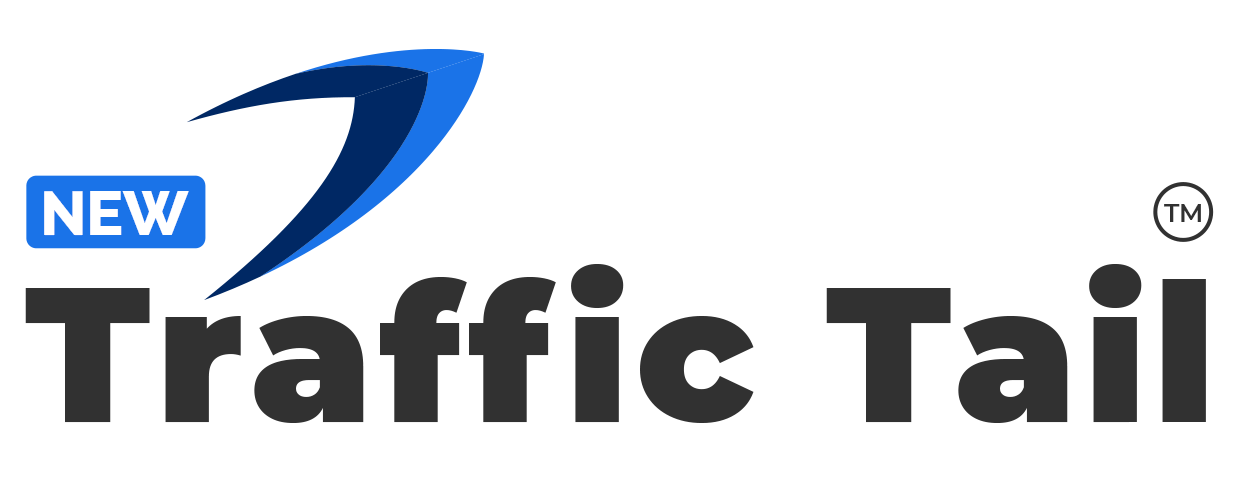In just a few short years, artificial intelligence has become a necessity for many businesses.
AI tools like ChatGPT, Jasper, and Gemini have been adapted by writers and marketers who want to produce content quickly.
Now, entire marketing teams use these tools to write blogs, generate product copy, and even create video scripts at unprecedented speed.
Sounds too good to be true? Well, that’s because it is. Along with this gold rush for efficiency comes the increasing problem of AI slop.
“AI slop” is internet slang referring to low-quality, AI-generated media, and it is now polluting every corner of the internet.
In other words, if human-made content is art, AI-made content is slop.
Why do we need to talk about this?
Because AI slop is starting to choke the very ecosystem it relies on. Readers are becoming more discerning, engagement is dropping, and search engines are becoming stricter.
Essentially, what started as an opportunity for creativity and scale has quickly become a race to the bottom.
For businesses that depend on organic reach, this is more than just a quality problem—it’s a strategic one as well.
Your content needs to be distinguishable from the noise if you don’t want your SEO to suffer.
The key question, therefore, is no longer “Can AI create content?” but “Can AI content create value?”

The promise and pitfalls of Generative AI
The early promise of AI was seductive for businesses: faster production, lower costs, and unprecedented scalability.
In theory, you could publish a dozen blog posts a week and dominate every high-value keyword with content production at the speed of light.
And to be fair, many marketers have seen real gains. AI can assist with ideation and even automate research. It’s a powerful tool—especially for lean teams trying to compete in content-saturated industries.
However, the pitfall lies in prioritizing automation and efficiency over strategy.
AI doesn’t inherently know your audience, your brand story, or your business goals. It learns from patterns, not purpose.
As a result, when companies overuse AI without editorial oversight, their output becomes robotic and repetitive.
Moreover, along with the advancement of AI, audiences have also become more discerning, often able to tell when something feels “off” or AI-generated; they can easily feel the lack of humanity that gives human writing its edge.
This growing disconnection erodes trust over time. And ironically, the more content brands produce, the less impact it has.
AI’s true potential isn’t in replacing humans—it’s in augmenting them. But too many marketers have treated it as an autopilot button instead of a creative partner.
What makes “AI Slop” harmful to SEO

AI-generated content is attractive for businesses because of the short-term benefits, but in the long run, it can actually undermine the very factors that drive long-term SEO performance.
Google and other search engines reward content that demonstrates authority, expertise, and usefulness. This is a basic principle that many of us forget in our pursuit of scalability.
When we use AI as a shortcut instead of a supplement, it introduces issues that directly harm SEO, such as:
1. Lack of originality and depth
AI models don’t create “new” content. They only “generate” it by remixing existing information on the internet.
That means even well-written AI text often lacks original insights or fresh perspectives. Over time, this leads to a bunch of “soulless” content that offers nothing new.
Search engines like Google, which are very particular about authority and credibility, are starting to flag such content as redundant.
2. Thin content and keyword stuffing
In an attempt to game algorithms, many marketers use AI to create countless short posts optimized for specific keywords.
But these pages rarely deliver substantial or useful answers. Google’s systems interpret this as “thin content”, which can reduce your credibility and ranking potential.
3. Repetitive patterns
AI slop is also easy to spot by its tone. It tends to overuse transitional phrases, maintain a flat emotional range, and rely on predictable sentence structures.
This repetition can make content feel lifeless and even fake.
4. Declining user engagement
Behavioral signals matter in SEO. High bounce rates and low dwell time tell Google your content isn’t engaging your readers and is therefore not valuable enough to be ranked or discoverable.
And because people are becoming increasingly discerning and AI literate, AI slop leads to exactly that kind of user behavior.
It can attract clicks, sure, but it ultimately fails to hold the user’s attention.
5. Damage to brand authority
Perhaps the most lasting consequence is AI slop’s impact on your reputation.
Once readers associate your brand with generic or low-value content, rebuilding trust can be impossible.
SEO recovery is difficult, but brand recovery is even harder.
Google’s response to AI Slop
Google’s position on AI-generated content is constantly evolving, but one thing has remained constant: quality comes first.
Google doesn’t explicitly ban AI content. However, any content created solely to manipulate rankings violates its spam policies.
The intent behind the content is just as important as the content itself.
Based on Google’s Helpful Content Update in 2022, we can say that Google evaluates sites based on helpfulness.
This means that websites stuffed with repetitive, low-quality articles (slop) will not be prioritized by Google for ranking.
And it’s why you should always prioritize human oversight and expertise over automation and efficiency.
1. Penalties and demotions
Google’s systems now detect patterns typical of AI slop, with its repetitive phrasing and generic formatting.
Pages that fit these patterns can be algorithmically devalued, meaning they rank lower even without a manual penalty.
2. Emphasis on E-E-A-T and human value
AI cannot replicate lived experience.
Personal stories, professional insights, and human context have never been more important with the integration of Experience, Expertise, Authoritativeness, and Trustworthiness (E-E-A-T) into ranking systems, which signals a shift toward rewarding authentic voices.
3. The value of transparency
Google’s documentation now encourages creators to disclose AI usage where relevant.
Transparency builds trust not only with readers but also with the algorithms that increasingly reward authentic content.
Scale the right way with quality over quantity
AI can streamline research, summarize sources, or generate structure, but final drafts should always be reviewed manually.
This needs to be run through by editors who check for tone, originality, accuracy, and brand alignment.
You can use AI for mechanical efficiency, but you’ll always have to rely on people for genuine, emotional storytelling and fact-checking.
SEO analytics can also be helpful in identifying high-impact topics. After you get them, you can then use AI to explore them from new angles.
For brands, maintaining a consistent voice is important to foster customer loyalty, which is why AI shouldn’t be used to define your messaging. Use it only for support.
Moreover, modern SEO extends beyond written content. AI video and visual content can also boost engagement metrics like watch time and on-page duration.
For example, for users who prefer learning by watching instead of reading, turning an article into a short explainer video can make them stay on your page longer, which signals to Google that your content is valuable.
The irony here is that AI content works best when humans remain creative.
It’s still important to innovate and keep up with the constant evolution of technology, but don’t fall into the trap of relying on AI completely. Human imagination and real-world experiences are things AI simply cannot produce on its own.
This is also why traditional SEO isn’t dead; it’s evolving.
7. The future of SEO in the era of AI
The full integration of AI into SEO and content creation is inevitable, but so is the push for higher standards. We’re heading toward a future where search engines prioritize pages that demonstrate genuine human insight over generic AI pieces.
This is why businesses need to learn how to use AI ethically, because this will eventually become a trust signal.
This won’t just affect your rankings; it will affect your reputation, too, because customers need to trust that the content you’re putting out is not slop.
Marketers who invest in AI literacy will have the edge because they understand both the strengths and limitations of AI.
AI can also help tailor products and experiences for users, but human oversight will ensure those experiences remain meaningful.
Ideally, the next generation of SEO experts will be fluent both in technology and human storytelling.
How to audit and fix AI slop on your site
If you’re one of the brands or companies who was initially attracted by the AI’s promise of efficiency and scalability and have already leaned on it for mass content, don’t fret—you can still clean it up strategically.
The important thing here is you’re finally AI literate and can differentiate between quality and spam content.
Here are some ways you can audit and fix AI slop on your site:
- Audit existing content
Use tools like Google Search Console to identify underperforming or thin pages.
- Evaluate for originality
Read the content manually. Does it offer unique perspectives, genuine (not hallucinated) examples, and real-world data? If not, revise with expert input.
- Add human context
Include firsthand experiences, quotes from real people, and real case studies. This adds credibility and depth that AI alone can’t replicate.
- Merge or remove duplicates
Combine overlapping articles into comprehensive guides and redirect outdated URLs.
- Reassess your tone
Focus on consistent, thoughtful output instead of sheer volume. Quality content lasts longer and compounds SEO value over time.
Building a Long-Term AI Content Strategy
As AI evolves, the smartest brands will adopt sustainable strategies that know how to incorporate speed with substance.
These strategies include:
- Setting clear content goals
Determine whether you want to drive traffic, generate leads, or build authority. Let your strategy—not the tool—dictate the output.
- Training teams on prompt engineering
Teach marketers how to craft effective prompts that guide AI toward brand-appropriate tone and depth.
- Establishing human review protocols
Every AI-generated draft should go through human editing for accuracy, originality, and compliance with brand guidelines.
- Combining data sources
Combine AI insights with important data from customer feedback and competitor research. This ensures content speaks directly to consumer needs.
- Investing in long-form and multimedia storytelling
AI can handle quick wins, but long-term SEO authority is built on comprehensive, expert-driven pieces—such as articles, reports, and videos — that showcase real experience.
You can use tools like AI text-to-video to create training videos out of textual material and different LLMs to help you write articles, for sure. The key here is to always edit the final product.
Use AI for help, but don’t let it make important and creative decisions for you. The future isn’t AI-made content vs. human-made/organic content—it’s AI as a tool, not a crutch, used by humans for efficiency.
Think beyond the algorithm
AI has redefined, and is constantly redefining, what’s possible in SEO and content marketing, but it hasn’t changed the fundamentals of what audiences value.
People still want original content made by real people; search engines still reward expertise and engagement.
The shortcut mentality—publishing more for the sake of visibility—no longer works. To stand out in a saturated digital space, we must return to these fundamentals and create content that genuinely helps people.
AI, like any other tool, can’t replace us humans. It can only help us. So, when used thoughtfully, it can actually eliminate busywork and empower us to focus on strategy and storytelling.
By scaling with intention and maintaining human oversight, you can create content that is not only optimized for SEO but is also meaningful stories and experiences, not for algorithms, but for real people.



